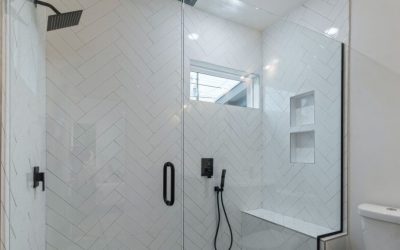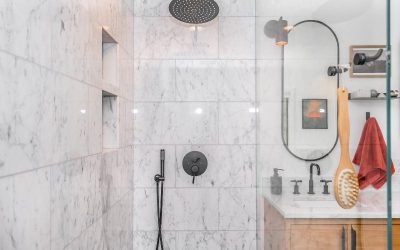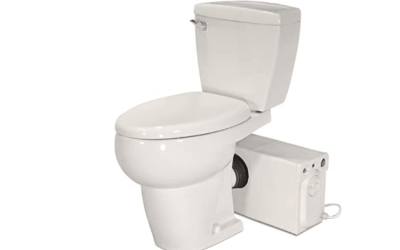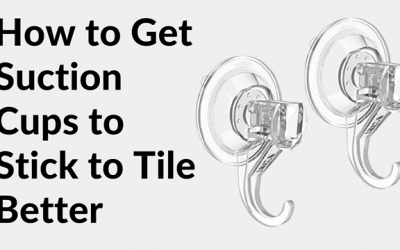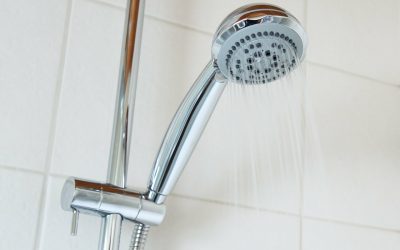Are you experiencing shower niche problems that you didn’t anticipate during installation?
If so, you are not alone. No one expects to experience any problems with their shower niche after installation. Maybe your waterproofing is failing and water is leaking into the wall cavity. Or maybe you’re seeing signs of mold growth, and it’s becoming increasingly difficult to clean.
In either case, it’s important to address the issue as soon as possible to avoid further damage. This blog post will explore some of the most common problems with shower niches, and offer solutions for each.
3 Major shower niche problems
1. Leakage/Water damage
There are a few things that can cause leakage and water damage in shower niches.
One possibility is that the grout or caulking around the niche isn’t properly sealed. This can allow water to seep in behind the tiles and cause damage.
Another possibility is that the drain in the niche isn’t draining properly, which can also lead to water build-up and damage.
In order to avoid this problem, first, make sure that the sealant around the niche is intact and there are no cracks or gaps.
Second, use a waterproofing membrane behind the tile to help keep moisture out.
Finally, make sure that the drain is clear and functioning properly so that water can’t build up inside the niche.
2. Mold and mildew problem
One of the main causes of mold and mildew in shower niches is improper ventilation.
If your shower niche isn’t properly ventilated, the warm, damp air can create an ideal environment for mold and mildew to grow.
Another possible cause is leakage. If there are any leaks in your shower niche, water can seep into the cracks and crevices, creating a perfect breeding ground for mold and mildew.
If you’re noticing mold or mildew growth in your shower niches, there are a few things you can do to clean it up and prevent it from coming back.
First, make sure that the niche is properly ventilated so that moisture can’t build up. Also, make sure the niche is well sealed around the grout to prevent any leaks.
3. Ruined tile grout
It’s true. Shower niches can ruin tile grout if they’re not properly sealed.
The problem is that the water gets behind the tile and starts to erode the grout. Over time, this can cause the grout to deteriorate and eventually fall out.
The best way to prevent this from happening is to seal the niche with silicone caulking when you install it. This will help keep the water out and protect the grout from damage.
See also: Can you use FRP panels for shower walls?
4. Soap scum build-up
Soap scum build-up can be caused by hard water, which is high in minerals like magnesium and calcium. These minerals react with soap to create a sticky film that’s known as soap scum.
The best way to prevent soap scum build-up in a shower niche is to use a squeegee or a brush to clean it after every use.
You should also avoid using bar soap, which is more likely to form soap scum than liquid soap. And if you do notice a build-up of soap scum, you can clean it with a vinegar solution or with a commercial cleaner designed for this purpose.
5. Cleaning difficulty
Are shower niches hard to keep clean?
If you have a shower niche, you know that it can be difficult to keep clean.
Over time, the tile grout around the niche can become discolored and even ruined. But, with a little elbow grease (and maybe a few helpful cleaning hacks), you can definitely get the job done.
Here are some tips on how to clean your shower niche and keep it looking its best:
-Use a soft brush or cloth to wipe down the inside of the niche after each use. This will help remove any soap scum or dirt buildup.
-Once a week, mix up a solution of equal parts water and white vinegar. Use this to scrub down the inside of the niche, paying special attention to the grout.
-Rinse well with clean water when finished.
-Every few months, apply some sealant to prevent water sipping through the grout
6. Shower niche too slanted
Another problem with shower niches is being too slanted. This can cause water to pool and not drain properly.
If you experience this, you might want to consider having it fixed. You can try evening out the grout lines with a putty knife or by using a level.
You can also try adding more mortar to the joints to help level it out. If all else fails, you may need to chisel out the entire niche and start over.
Alternatively, consult a good contractor to fix it for you and make sure that the water drains properly so that you don’t have to deal with this issue anymore.
See also: Best shower niche ideas
FAQ about shower niche problems
Do shower niches get moldy?
Yes, shower niches can get moldy if they’re not properly cleaned and maintained.
Mold loves damp, dark places, so if your shower niche isn’t well-ventilated and/or you don’t clean it often enough, mold can start to grow.
To prevent mold from taking over your shower niche, make sure to keep the area clean and dry. If possible, open up a window or ventilate the space after showers.
How much slope should a shower niche have?
Most shower niches are sloped slightly, typically between 1/4″ and 1/2″. This helps to ensure that water drains properly and doesn’t pool in the niche.
However, the amount of slope may vary depending on the design of your shower and the size of the niche.
Always consult with a professional contractor or designer to determine the best slope for your particular shower niche.
Conclusion
Do you have a shower niche? If so, do you love it or hate it?
Many people seem to be on the fence about this bathroom feature. Some find it extremely useful for storing toiletry items, while others feel that it’s simply taking up extra space.
If you’re among those who dislike your shower niche, could it be due to the shower niche problems we’ve discussed above? If so, there is no need to worry because we have offered solutions to each problem in this article.
You should also consult a professional contractor for the best advice before installing a shower niche.


